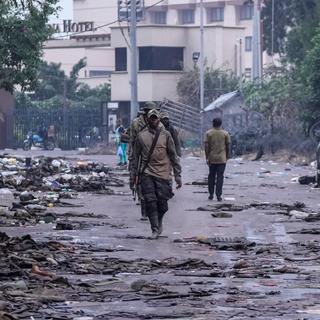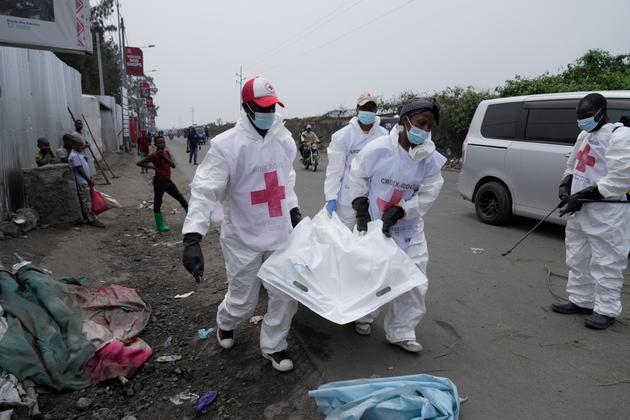


After five days of fighting, situation in Goma is uncertain
FeatureThe residents of the capital of North Kivu province, which fell into the hands of the M23 rebel group, backed by the Rwandan army, have been anxiously rediscovering the state of their town under rebel control.
A bloated body was floating in the waters of Lake Kivu. It lay on its back, shirtless, with arms reaching to the sky as if in a final silent prayer. Since the day started, four bodies have slowly drifted along in front of a house overlooking the lake, on Thursday, January 30.
Five days after the outbreak of fighting in Goma, the capital of North Kivu province, in the far east of the Democratic Republic of the Congo (DRC), how many corpses have been floating in the lake? How many dozens more had been picked up, today and the day before, by Red Cross teams, outside the entrance to the provincial hospital or in the airport district, where some still lay, strewn here and there, covered with tarpaulins? How many were left in the northern part of the town, still considered a no-go zone – where, according to various sources, Armed Forces of the Democratic Republic of the Congo (FARDC) soldiers and wazalendo militiamen who have been unwilling or unable to lay down their arms were entrenched – with few exits?

These were not the least of the questions being asked in Goma, which has been in a state of stupefaction after the lightning offensive by the March 23 Movement (M23) rebel group, supported by neighboring Rwanda, which has turned the town, its power structure and people's spirits upside down. The "day after" in Goma is an uncertain one.
You have 82.04% of this article left to read. The rest is for subscribers only.
